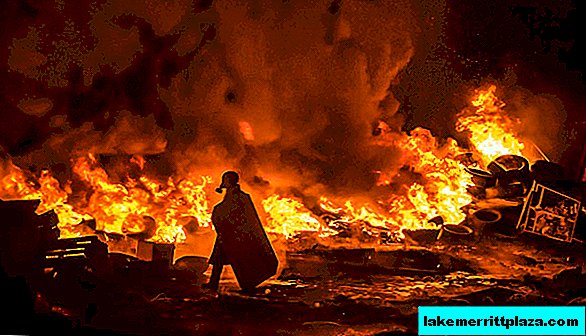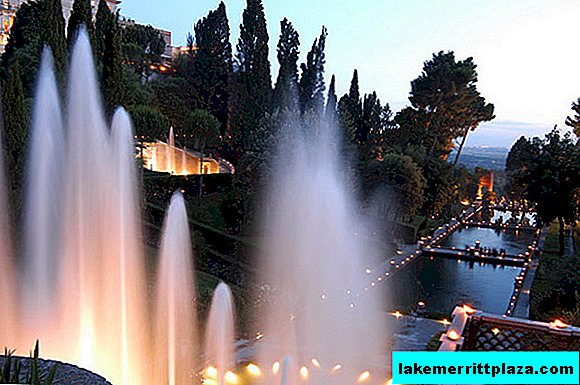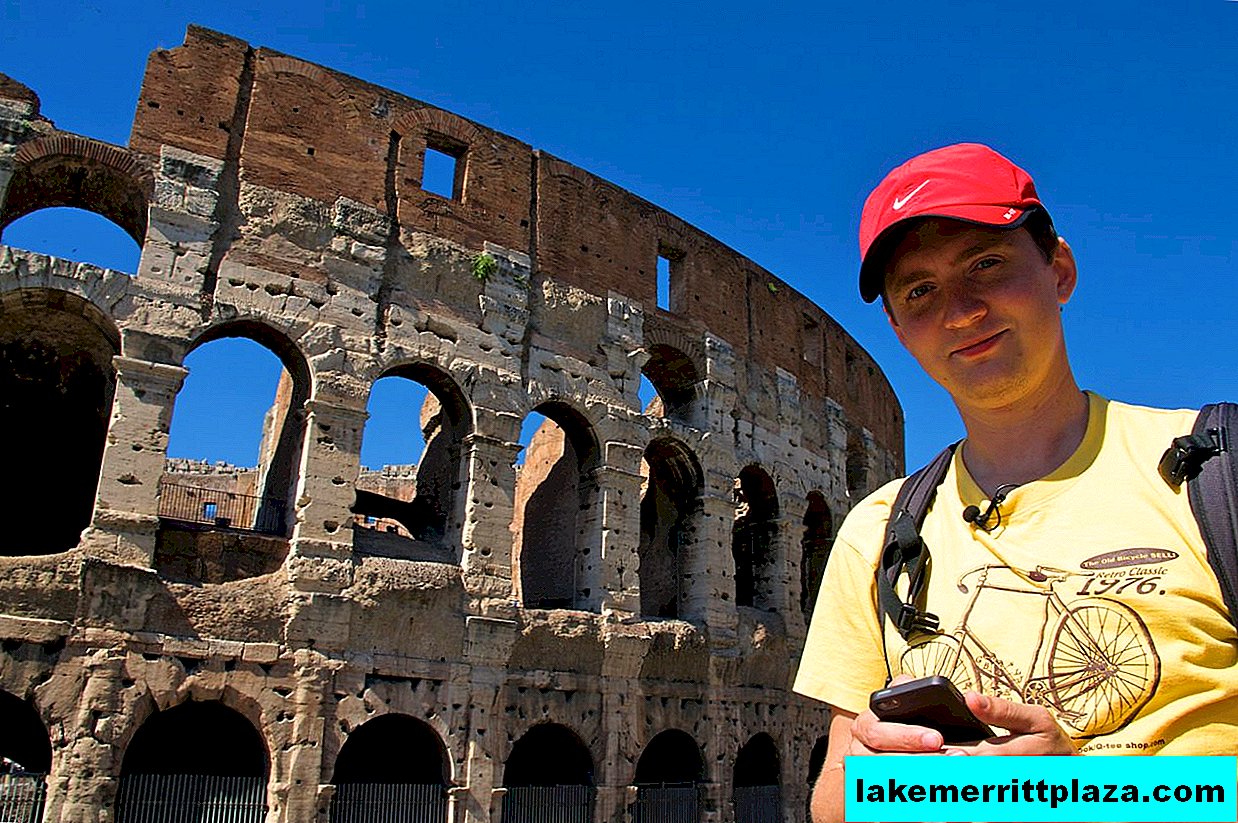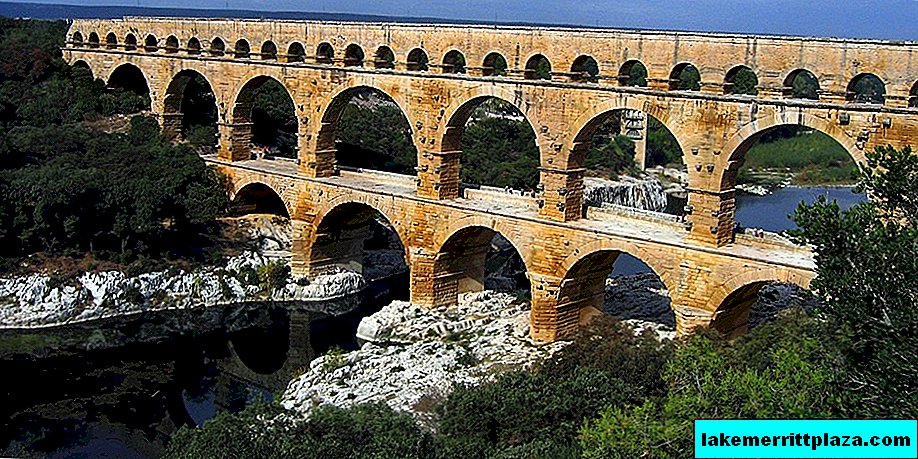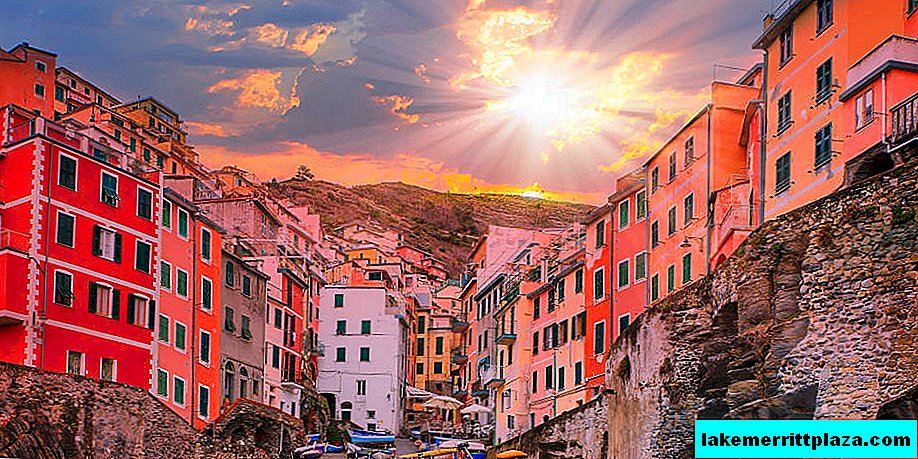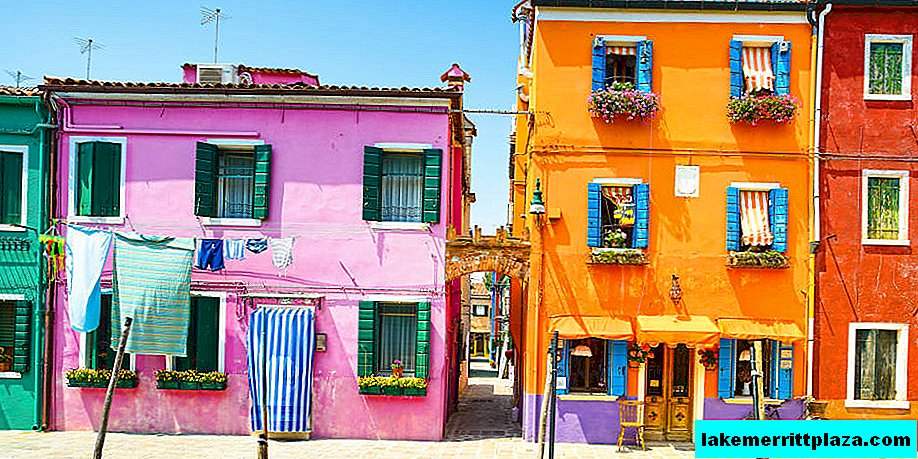In the heart of Italian Florence, travelers can admire the most extraordinary cathedral in all of Europe - Santa Maria del Fiore. We have already talked about the delights of the cathedral itself, now it’s worth paying your attention to another magnificent building, which is part of the Florentine Duomo complex - Giotto's bell tower.
Rising almost 90 meters, this bell tower allows visitors to enjoy the gorgeous panorama of the city and the surrounding area. It is simply impossible to be indifferent to such a sight.
At the time when the cathedral was built, the only effective way to notify city residents about upcoming church festivals and services was precisely the ringing of bells. Therefore, the author of the original design of the cathedral Arnolfo di Cambio included a campaign tower in it. Engaged in the development of drawings and the construction of the first tier of the bell tower Giotto di Bondone. Grateful descendants immortalized the name of the great master, naming the tower Giotto's bell tower (Italian: Campanile di Giotto).
Key Milestones
If you turn to the main entrance to the Cathedral of Santa Maria del Fiore, the Campanile building will be located on the right hand side. Chronicles of the construction work of the Florentine Duomo indicate that the foundation work of the bell tower was carried out at the end of the 13th century. In fact, the builders worked simultaneously on the foundation of the cathedral and the campaign. At that time, the work took place under the vigilant supervision of the first architect of the cathedral - Arnolfo di Cambio.
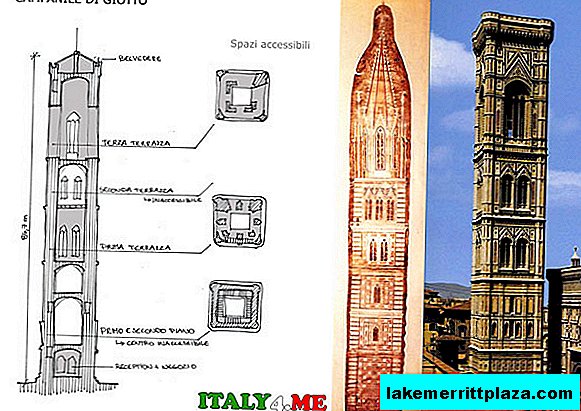
After the death of di Cambio, the construction was quiet for as long as 30 years. Only in July 1334, Giotto di Bondone again launched the complex mechanism for the construction of a monumental Catholic church.
Pits under the foundation of the bell tower, which went 20 cubits deep, were all that the new architect had at his disposal.
According to medieval fashion, the bell tower was conceived in the form of a tetrahedral tower with a side of 25 cubits and a height of 144 cubits. Giotto did not change anything in the overall project, focusing on sketching for external and internal design.

The intensified work on the construction of the bell tower completely captured the attention of the architect and artist. Giotto seeks to improve the design of di Cambio, with an additional superstructure at the top of the tower. However, conservative construction curators decided not to use the new project, as overly bold.
Giotto's age was steadily approaching 70, which at that time was a pretty decent figure. After working on the campaign for only 4 years, the master dies, leaving a decent baggage of achievements and a finished first tier.
In the decoration of the campaign, Giotto applied the same type of multi-colored marble that was used in the decor of the Cathedral of Santa Maria del Fiore. The belfry of the belfry was decorated with panels made according to the author's sketches. Red and white contrasting patterns add incredible depth to the patterns. Subsequently, the exterior decor of the bell tower was made in the workshop of the famous genius of the Italian quattrocento - sculptor Luke della Robia.
The case of the deceased Giotto continued the architect Andrea Pisano, which during his lifetime actively participated in engineering. After receiving the post of chief curator of the construction of the campaign, Pisano managed to erect the next two tiers of the building. The construction and decoration of the tower took place in strict accordance with the achievements of Giotto. The plague epidemic that took place in the mid-14th century took many lives, including Andrea Pisano. The construction of the cathedral and bell tower again freezes for several years.
Giotto's bell tower received the third creator in 1351, Francesco Talenti became it. It is thanks to the talented architect that the Florentines acquired a sleek, lightweight, lacy-like campanile building. The first three tiers of the building look more "stocky." In contrast, the three upper floors, filled with Talenti, turned out to be stretched up. Narrow windows, decorated with vertical decor, reinforce the impression of Gothic shooting, aspiration to the sky.
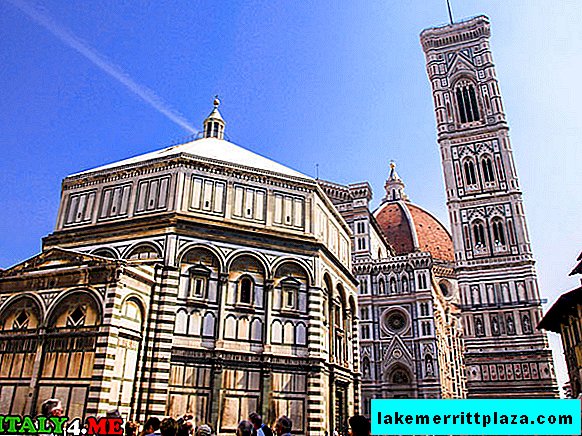
Through the efforts of Talenti, the tower acquired a rich modern finish. Another departure from the original design is a flattened roof. The completion of the bell tower dates back to 1359. The three-color marble decoration of the tower combined its appearance with the decoration of the cathedral. The final height of the building was 85 meters, the spire that was abolished by Francesco Talenti assumed an additional 37 meters of "growth".
Exterior finish
The lower tiers of the bell tower, as we mentioned earlier, look more squat. They are richly decorated with carved plates and bas-reliefs. Work on the first tier is the merit of master Giotto. Against the background of gray-green marble, the architect ordered to place vertical paintings of pink marble in a white edging. In the center of each tile are medallions illustrating the seven sacraments and scenes from the Bible. Each of the four walls of the tower is decorated with seven such paintings-plates.

The next tiers of the campaign are decorated with bas-reliefs that were born in the capable hands of Luca della Robia and Andrea Pisano. Talented artists have shown in their works the complex path of human progress. The bas-reliefs illustrate the genesis of man, and then his knowledge of crafts, science and culture. Depicted are quite typical professions for the Middle Ages: winemaker, astronomer, stone carver, shepherd, etc. Worldly affairs are diluted with a collection of virtues.

One of the tiers is deprived of decorative bas-reliefs. Four slabs on each side are lonely shining with blank frames. The fourth tier of the tower lost its decorations - sculptures that embodied biblical prophets in stone. The works of architects Nino Pisano, Donatello, Andrea Pisano and Nanni di Bartolo were identified in the Museum of the Duomo, where they are guaranteed safety.
Above the entrance to the bell tower is depicted the Madonna and Child. This work, like most decorative elements of the tower, was conceived and embodied by Andrea Pisano.
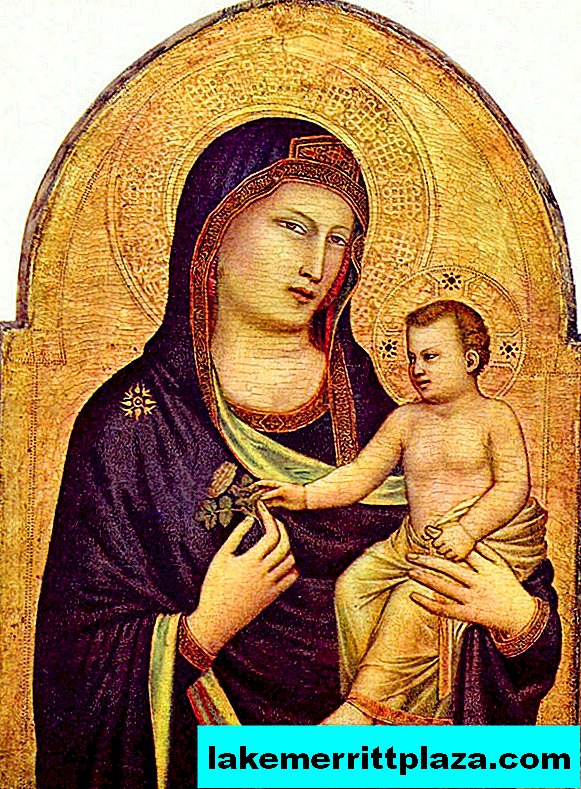
The tiers of the bell tower have a clear horizontal separation due to mosaic inserts created by the artist brothers Cosmati. The three final floors of the tower have elongated windows in lancet frames. Outside, these windows are decorated with stucco molding, resembling a twisted cord, which gives the building additional elegance. The lightness of the lines and the delicate exterior finish turn the campaign into something airy, nullifying the heavy stone and huge height.
By the way, in the museum at the cathedral you can see a drawing made by Giotto, depicting a general view of the bell tower. The current building looks an order of magnitude more interesting and elegant than conceived. Nevertheless, the tower bears the name of the artist and architect, who put the last years of his life on its creation.
Modern life of the bell tower of Giotto
On a sunny day, the modern guest of Florence can stroll along Cathedral Square, enjoying the perfect beauty of the buildings that make up the Duomo. The bell tower itself is an excellent example of Gothic architecture. Decorated with red, white and green marble slabs, the tower serves as a viewing tower. From a height of almost a hundred meters, a magnificent view of the red-brown roofs of houses and a broken line of hills on the horizon opens up.
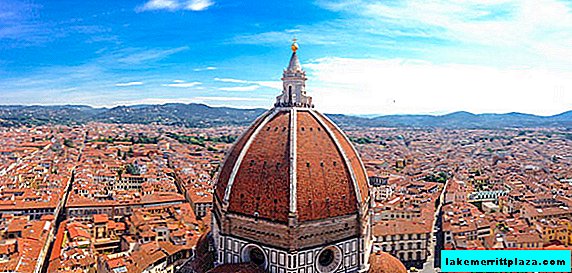
The visitors of the Campanile are provided with more than 400 steps forming the inner staircase. Slowly overcoming the six tiers of the tower for two, tourists will be able to look at Florence from different angles and heights.
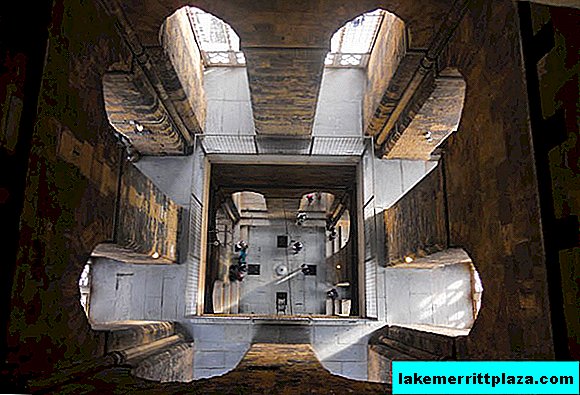
Narrow windows surround the inner staircase of the bell tower from the bottom to the top. At the observation deck, in addition to the distant borders of the city, you can see in detail the Brunneleschi dome crowning the cathedral. And also look down on the squat building of the Baptistery of St. John the Baptist.

“What is a bell without a bell?”, You ask, and you will be absolutely right! A bell is present. It can be found on the upper tier of the tower. True, he does not fulfill his main function, but is exhibited in one of the niches as a museum exhibit.
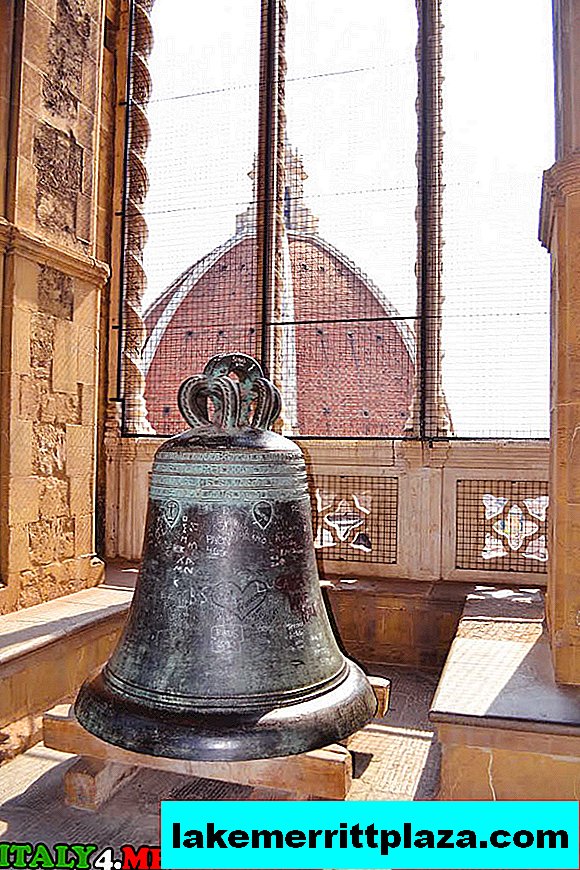
Visitors are allowed to roam all tiers, including the top one, where you can see the roof rafters and even tile roofing.
The point of all aspirations of the guests of the city is a viewing gallery, organized around the perimeter of the roof of the Giotto's bell tower. For the convenience of visitors, the gallery is equipped with stationary binoculars. And in order to protect travelers, the inspection passages are taken by a metal crate. However, such a trifle is unable to belittle the admiration of a person who first looked at the ancient beautiful Italian city from a similar height.
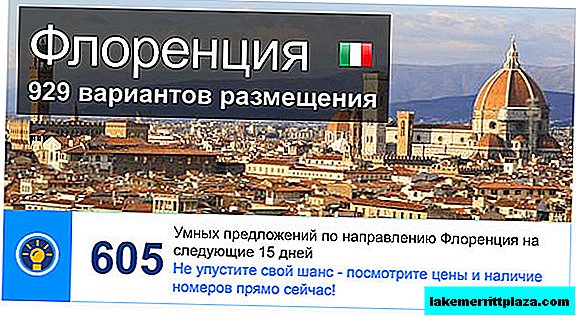
Useful information: how to get there
Campanila is easy to find in the center of Florence on Cathedral Square, next to the Cathedral of Santa Maria del Fiore.
Find a hotel near the bell tower of GiottoYou can use the overview gallery from 8:30 to 19:30. On major religious holidays, such as Easter, Christmas and Mother of God Day, access to the bell tower is closed.
A single visit to the tower will cost 6 euros, tickets can be purchased on site or booked on the official website www.museumflorence.com/en. More favorable is the purchase of a comprehensive ticket for 10 euros, which includes access to other attractions:
- Dome;
- Baptistery;
- Campanila Giotto;
- Crypt of St. Reparat;
- Historical Museum.

